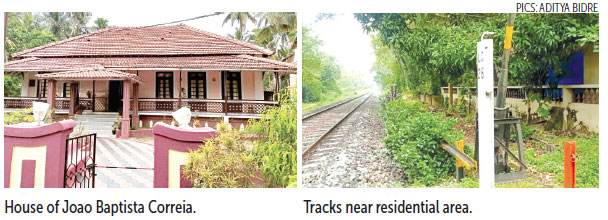
KARSTEN MIRANDA
AROSSIM: Considered as Goa’s pride, the century-old heritage structures are just dots on the map for Railway authorities and survey numbers marked for land acquisition.
These heritage houses and monuments, some of which were built even before the Railways laid their first track, are now facing partial demolition, if the double tracking project does proceed through Majorda, Cansaulim, Arossim, Cuelim, Issorcim and numerous other neighbouring villages along the South Western Railway (SWR) track.
This list of over 150 ancestral houses includes that of former Chief Minister (late) Luis Proto Barbosa, former Environment Minister (late) Matanhy Saldanha and the award-winning writer Damodar Mauzo. Not to forget the impact it will have on two well-documented heritage homes, that of Joao Baptista Correira which is facing another threat in the form of the proposed rail-overbridge, and the famous house of Bossuet Barros Pereira, which was built in 1828.
These treasure troves of history are mere obstacles to the Railway authorities who have scoffed and insulted these families that have been fighting for their rights.
The locals are also concerned about the loss of religious heritage such as the St Anne’s convent and children's playground.
There’s also the historic St Lawrence Chapel in Arossim that was founded in 1599 and according to researcher Themistocles D’Silva, it can be located on the map of old conquests drawn in 1610.
“The railways want to claim the land besides the chapel. If the double tracking happens, 30 metres
from the tracks will be acquired. This means most of the Chapel will be demolished. How can we allow a 130-year-old railway to destroy a chapel that is nearly 425 years old? We want to save the chapel for our future generations,” said local resident Ella Mascarenhas and member of Goencho Ekvott.
Another local, a chapel committee member, explained that in such a scenario, the area right up to the altar of the chapel and the road in front of it will be lost.
The villagers maintain a strict vigil on this chapel as there have been attempts in the past by the railways to block the public access to the chapel. They had questioned the railways for dumping debris in front of the chapel, on public land without taking any permission from the local authorities.
